Skydivers practise indoors with CC-Link industrial network
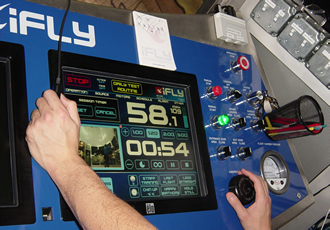
A new indoor skydiving centre, just opened in Basingstoke, UK, uses cutting-edge CC-Link industrial communications to provide thrill seekers with an exciting, yet safe, aerial experience.
The centre is equipped with a state-of-the-art 14-foot diameter vertical wind tunnel that suspends its flyers in the airflow, emulating the feeling of freefall. Experienced skydivers can develop breathtaking acrobatic routines, while others use such facilities for training. Organizations book them for team building and bonding sessions and families create life-long memories.
The centre is run by Airkix, which already operates hugely popular skydiving tunnels in Milton Keynes and Manchester.
Designed by SkyVenture of Texas, Basingstoke is one of the most advanced skydiving wind tunnels in the world. It generates wall-to-wall airflow rather than a central bubble as older tunnels do, so is far safer, more realistic and can accommodate multiple flyers.
SkyVenture, which has many tunnels around the world, understands the need for a control system that allows for easy operator control as well as simple on-site installation. It incorporates CC-Link communications to improve the operator interface as well as to control the users’ experience and to aid the installation process.
CC-Link is a high-speed, high-performance open communications’ network technology for automation. It has an impeccable pedigree, originally being developed for use in demanding industrial applications. Significantly, it enables devices from numerous manufacturers to communicate with one another and is ‘deterministic’, i.e. it ensures instructions are carried out at exactly the correct time, allowing precise timing of system events.
CC-Link was originally developed by Mitsubishi Electric, a global leader in automation and motion control technologies. In 2000, Mitsubishi turned the technology over to an independent third party, the CC-Link Partner Association (CLPA) that has been responsible for the technical development and promotion of the technology since.
For the skydiving tunnels, SkyVenture uses a Mitsubishi Q Series PLC (programmable logic controller) as the basis for its control system. A CC-Link master card within the PLC rack controls the communications with four giant inverters that control the fan motors.
SkyVenture says it prefers CC-Link to other communication technologies because it provides a more interactive dialogue with the inverters and other devices connected to the network. Via a single CC-Link communication line, the tunnel operator monitors voltage, current, power, set frequency and alarms, as well as setting the operating frequency to match each user’s weight and ability. On older, non-CC-Link systems, all of these different functions had to have individual communication cables, which were a major task to install and maintain.
The control system incorporates many I/O points including drives, sensors and other devices to ensure the quality and safety of the skydivers’ experience. These are all connected via the CC-Link cable, which is laid out around the facility with links to each device.
Additional I/O nodes monitored and controlled by CC-Link include airspeed sensors in the chamber. The airspeed defines the lift generated and the height to which the user rises.
The CC-Link network is also used to control the air temperature in the flight chamber by opening and closing 20-foot wide by 10-foot high doors. These doors are connected to linear actuators, driven by more inverters. The doors’ positions are displayed on the human-machine interface (HMI) touchscreen used by the control room operator.
Slave HMI screens are provided in the flight chamber and spectator gallery. Flyers find the information useful for training and analysis, while spectators enjoy watching the airspeed, especially when it goes above 140mph.
‘Time-up’ visual indicators in the flight chamber are also controlled via CC-Link. Due to the wind noise in the chamber, strobe lights are used to indicate that the flight session is coming to an end.
The SkyVenture tunnels are energy-efficient recirculating tunnels. They use four 600hp direct-driven 2.8-metre vent-axial fans mounted on the top of the building to draw air up through the flight chamber. They can easily generate airspeeds greater than 170mph – equivalent to a Category 5 hurricane.
The fastest vertical wind tunnel in the world, capable of generating wind speeds approaching 250mph is a SkyVenture facility in Seattle. To maintain control of such a powerful airflow, the system monitors fan motor vibrations, temperature and safety shutdown triggers that all have to operate in milliseconds. All of this information must be communicated through a user-friendly HMI that facility operators can monitor while customers are in flight. Obviously, when all this takes place in a simulated super hurricane, speed is essential, but SkyVenture knows it can rely on the CC-Link network to communicate instructions and information in milliseconds.
And that’s not the biggest advantage CC-Link gives SkyVenture.
Constructing the tunnels is one of SkyVenture’s greatest challenges. It must build relatively complex pieces of machinery in locations all over the world using local labour. The key to the SkyVenture success is in the simple-to-implement and install design of the tunnel, and its associated control systems. Most tunnels can be shipped in standard containers and assembled by a crew that may never have seen this type of machine before.
CC-Link simplifies the wind tunnel control system installation – down to connecting a handful of cables in the field rather than having to wire up hundreds of separate connections. CC-Link allows SkyVenture to complete 90% of the control system in its Texas home base, saving costs and ensuring quality.
Another huge advantage that CC-Link provides is reliability. Day after day, month after month and year after year the control systems – including CC-Link – operate at a rate of over 98%. This is an actual operational figure, not just a projection.
Since its first installation in Orlando, Florida, SkyVenture has built over 25 wind tunnels. From Amazonian Brazil to the mountains of Malaysia and Montreal’s harsh winter, SkyVenture has wind tunnels in almost every climate and condition. The company plans to continue to build new systems and retrofit older ones with the benefits that the CC-Link network provides.
The combined advantages of speedy communication and the ease of installation in the field have made CC-Link communication the safe and cost-effective choice for the world-leading skydiving wind tunnel designer SkyVenture.
Similar articles
More from CLPA Europe
- Migrate to TSN-based networks of the future 8th January 2020
- CLPA strengthens TSN leadership position for Industry 4.0 at SPS 2019 22nd November 2019
- Driving Industry 4.0 with CC-Link IE network switches 5th August 2019
- Time sensitive networking to lead the way to Industry 4.0 21st May 2019

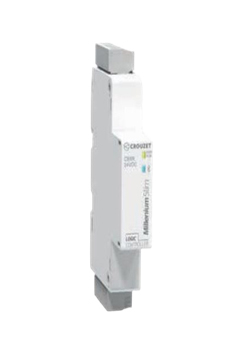
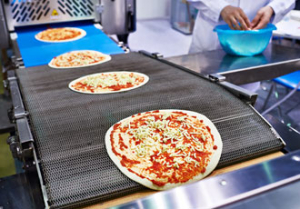
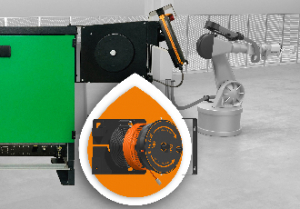
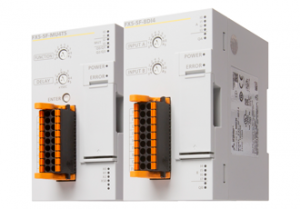







Write a comment
No comments